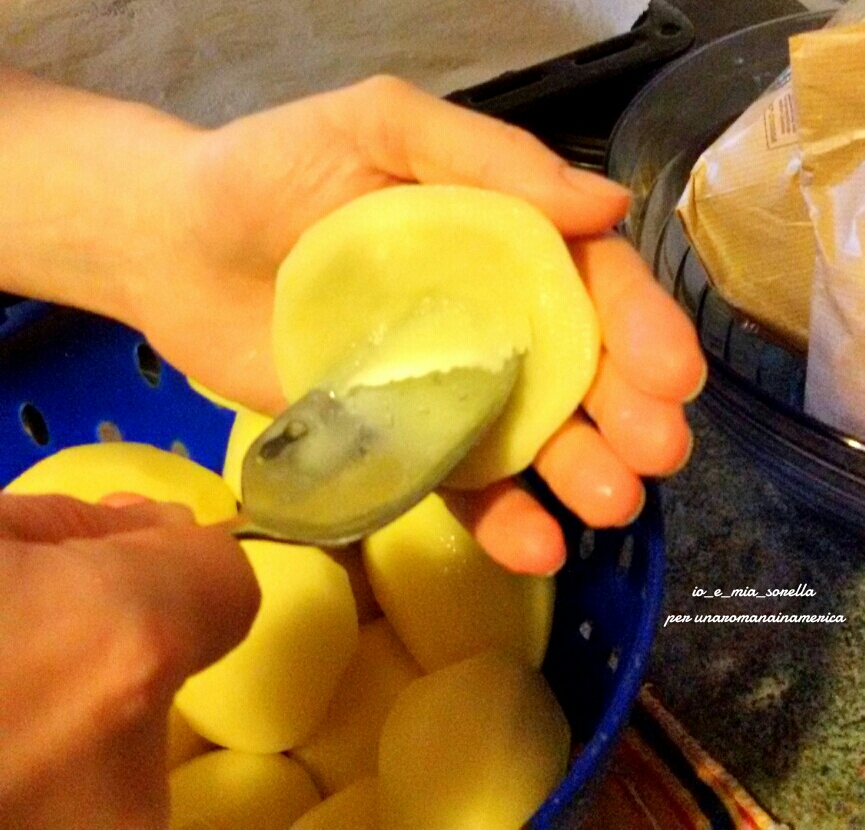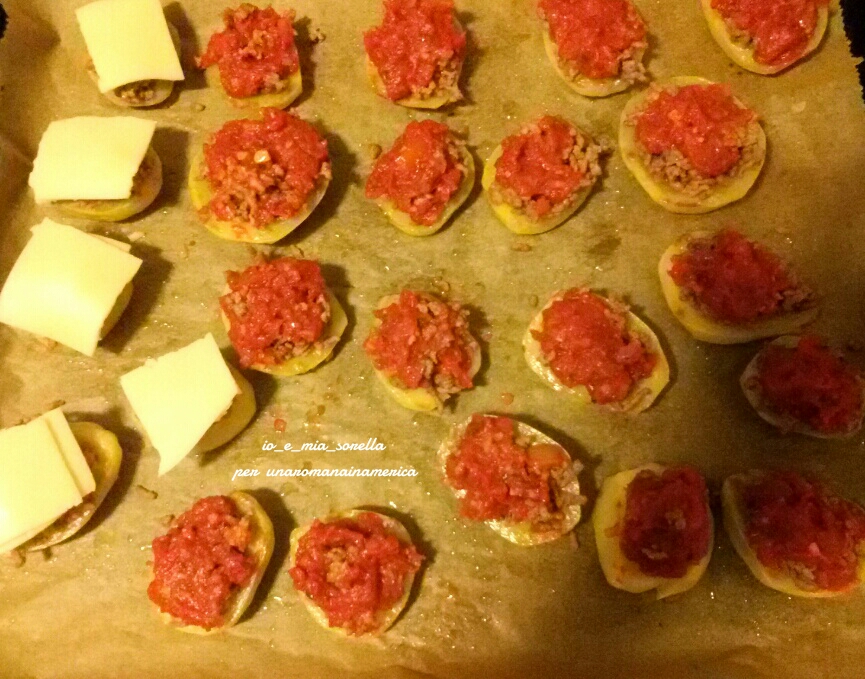“Il cibo spirituale viene cotto sulla brace delle stelle”
“Hrana spirituală e preparată pe jar de stele”
(N. P. Redi)
Da quando vivo in Baviera, ad essere onesta, ho imparato diverse cose che non immaginavo minimamente. Ho scoperto, ad esempio, che le montagne con la neve non sono poi così tremende, che il caffè non è soltanto quello espresso che tanto amo, che la spesa al supermercato è più divertente se ci vai con un cestino in vimini e abbandoni per sempre le tristi buste in plastica, che con 15° Celsius non è freddo e non è inverno, che il sole conosce dei modi di nascondersi e poi uscir fuori all’improvviso che sembrano quasi geniali, che il tedesco è una lingua tremenda, ma che se capisci il giochino puoi dire di avercela (quasi, ma tanto quasi) fatta. Ecco. Ora non vi dirò anche quello che invece ho confermato, sensazioni o pensieri, perché è meglio che me lo tenga per il prossimo articolo.
Ma come vi dicevo nel primo post col quale ho inaugurato questa rubrica (che vi lascio proprio qui ) il mio modo di mangiare strampalato si è un tantino modificato, o per meglio dire, è diventato più curioso. Si è arricchito, aprendosi a nuove possibilità, vuole diventare “cittadino del mondo”. Roba da matti, il mio modo di mangiare supera perfino la mia volontà.
E’ per questo che la ricetta di oggi ha il sapore della terra della mia amica Andreea Verdeți, la prima donna che ho conosciuto quando arrivai qui in Baviera.
Andreea è una ragazza rumena che vive qui in Germania da circa quattro anni, parla quattro lingue, è sposata col mio amico Alexandru – che però tutti chiamiamo Aly – ha vissuto in Italia tanto tempo nei pressi di un altro lago meraviglioso, ha abitato in diverse città della Germania (imparando il tedesco in un tempo che definire record è un eufemismo).
Adora viaggiare, pensa in italiano, ama la sua città natale nonostante le riconosca i difetti che ha. Praticamente come me.
Ma a differenza mia, Andreea sa cucinare. E io la ringrazio per questa giornata che abbiamo passato insieme, lei a far tutto e io a scattare foto e scrivere.

Oggi insieme a lei (Christian per stavolta può riposare!) vi presento la ricetta delle patate ripiene con quello che noi italiani chiameremmo ragù e che ovviamente non è proprio un ragù. Si può mangiare come secondo, o comunque come piatto misto e sfizioso, se mangiate la carne ovviamente.
E’ una ricetta semplice, ma come tutta la cucina rumena in generale, è un po’ lunga da fare, poiché i loro piatti sono di solito un tantino più elaborati e meno veloci di quelli cui noi siamo abituati. Ah, è buonissima!
Come al solito chiacchiero troppo.. vi lascio alla ricetta!
Difficoltà: bassa
Ingredienti (Per quattro persone circa):
Patate 1Kg
Carne macinata mista (500gr)
Polpa di pomodoro (qb)
Sale
Olio
Pepe
Cipolla (1 intera)
Aglio (uno spicchio)
Prendete le patate e sbucciatele, tagliatele a metà e scavatele fino a creare delle mezze cupole “vuote” , che loro invece chiamano mici barcuțe – piccole barche – adagiatele poi in una teglia da forno a una distanza di 1 – 2 cm tra di loro, con la parte cava rivolta verso l’alto. Assicuratevi che le patate siano abbastanza grandi da poter essere tagliate e scavate mantenendo comunque una grandezza media.

Aggiungete un goccio di olio e un pizzico di sale in ognuna delle barchette, poi infornate a forno già caldo a 200° per circa dieci minuti, ma a metà cottura rigiratele in modo da avere la parte vuota sotto.. insomma, come se la vostra barca si fosse rigirata!
Mentre le patate cuociono, passiamo alla carne. In una padella fate cuocere la carne con olio, sale e pepe per pochi minuti a fuoco non troppo alto, anche perché finirà poi di cuocere direttamente in forno.. ma andiamo con ordine! In ogni caso se volete potete aggiungere peperoncino o qualsiasi altra spezia vi piaccia, ma noi preferiamo condire il nostro macinato in modo più semplice. Quando la carne è cotta toglietela dal fuoco e lasciatela a riposare.
In un pentolino mettete poi l’olio, il sale, la cipolla e l’aglio (tagliati entrambi a pezzettini piccoli) e fate soffriggere un po’; aggiungete poi la passata di pomodoro e lasciatela cuocere a fuoco basso per qualche minuto.
Ho chiesto ad Andreea perché mai è necessario cuocere la passata separatamente dalla carne.. la sua risposta? Da noi si fa così! Dunque è Andreea stessa che porta la tradizione del suo paese qui in Baviera e la osserva accuratamente: bisogna sporcare una padella e un pentolino per preparare qualcosa che poi andrà comunque mischiata.. misteri della cucina rumena!!
Torniamo a noi.
Trascorsi i dieci minuti in forno, togliete le patate e rigiratele in modo che le barchette siano nel verso giusto, a “navigare” sulla carta da forno, quindi. A questo punto versateci dentro prima la carne e poi la passata.
Rinfornate il tutto per circa trenta minuti o comunque fin quando le patate non saranno belle dorate.

A questo punto il gioco è fatto!! Servite le vostre patate ben calde su piatti colorati e ricordatevi la cosa più importante mentre lo fate.. sorridete!!

Andreea consiglia… Al posto della passata di pomodoro, potete condire il tutto con un formaggio (Emmental o cascaval afumat, una specie di scamorza affumicata un po’ più dura), che sciogliendosi perbene può essere un’ottima variante. Provate!!
A presto
Sabrina e Andreea

“Spiritual food is cooked on the embers of the stars” (N.P. Redi)
I’ve learned so many things that I never thought I would, since moving to Bavaria.
I’ve learn that mountains covered with snow are not such a bad thing, for instance.
I’ve learned that coffee doesn’t necessarily always have to be my beloved espresso.
I’ve learned that going grocery shopping with a wicker basket can be more fun than using the same old boring plastic bags.
I’ve learned that 59 degrees F doesn’t have to mean cold and winter.
I’ve learned that the sun likes to play hide and seek on most days and show up when you least expect it.
I’ve learned that German is a terrible language, but once you understand its little game and rules, you can finally say you ( almost ) got it.
I’ve also been having thoughts and feelings about Germany that have been confirmed once I moved here. But I will save my considerations for a later time.
As I mentioned in the first article I wrote to inaugurate this column ( that you can read here), my strange eating habits have become more interesting since being here. I think it’s safe to say that my stomach is open to new taste experiences now. It wants to become a citizen of the world if you will, and my eating habits are slowly changing against my will. Bossy!
For this reason, today’s recipe tastes like a foreign country, where my friend Andreea Verdeți, the first woman I met here in Bavaria, is from.
Andreea is from Romania, she’s been living in Germany for four years. She speaks four languages, she’s married to my friend Alexandru – aka Aly – and she lived in Italy for a long time near another wonderful lake. She lived in different cities in Germany and she learned German in literally no time. She loves to travel, she thinks in Italian, she loves her hometown although she’s well aware of its countless flaws. Andreea and I have a lot of things in common, but, unlike yours truly, she can cook and I want to take this opportunity to thank her for spending the day together while she was doing everything and I was just writing things down and taking pictures.
Today, Andreea and I ( Christian can take it easy this time ) want to introduce this recipe to all of you: potatoes stuffed with what Italians would call “ragù”, which is obviously not, to be honest.
These stuffed potatoes can be served as a second course or as a tasty side dish, if you are a meat lover, that is. It’s very simple to make, but the preparation, like every other Romanian recipe, requires a little bit of patience as their dishes are more elaborate than what we’re used to. It’s delicious nonetheless.
I speak too much, what else is new, uh? Here’s the recipe!
DIFFICULTY: low
INGREDIENTS:
2 lbs of potatoes
1 lb of ground beef Tomato sauce
Salt
Olive Oil
Pepper
1 onion
1 clove of garlic
Peel the potatoes and cut them in half. Scrape off the insides until they look like small cupolas which in Romania they call “mici barcuțe” – little boats -. Place them onto a baking pan at least an inch apart from each other, empty side up.
Make sure your potatoes are large enough to maintain a decent size after being prepared to be stuffed.
Drizzle each little boat with olive oil and season with a pinch of salt. Bake at 390 degrees F for about 10 minutes but don’t forget to flip them over halfway through the cooking process to allow the whole potatoes to cook evenly.
While the potatoes are baking in the oven let’s move on to the stuffing.
Cook your ground beef, seasoned with salt and pepper in a large saucepan for a few minutes over medium heat ( remember the stuffing will finish cooking in the oven ).
Feel free to add cayenne pepper or any other spice / herb you like.
We like our stuffing mild, so we decided to keep it simple for today.
When the meat is cooked thoroughly, let it rest for a minute.
Combine chopped onion, minced garlic, olive oil and salt in a small pan and sauté until golden brown. Add tomato sauce and let everything simmer for a few minutes.
I asked Andreea why she had to cook the meat and the tomato sauce separately and her answer was “that’s how we do it in Romania”. So, we’re going to follow her lead without questioning her, as she’s the one bringing a little taste of abroad into Germany, but dirtying two pans to cook something that will end up being mixed together anyway? Really? Gotta love the Romanian ways!
Anyway, 10 minutes have passed and it’s now time to take the little boats out of the oven. Turn them back empty side up as if they were “sailing” on their baking sheet.
Pour the meat in the holes you created in the beginning and top with a little tomato sauce.
Bake again for about 30 minutes or until the potatoes have reached a golden brown color.
That’s it, serve your stuffed potatoes on colorful platters and don’t forget, while you’re doing that, to smile!
Andreea’s suggestion: you can replace the tomato sauce with Swiss cheese or smoked provolone as they melt beautifully under the broiler. It’s the perfect variation for this recipe. Try it!
See you soon,
Andreea and Sabrina
Traduzione a cura di Caterina Podda
Traslated by Caterina Podda

